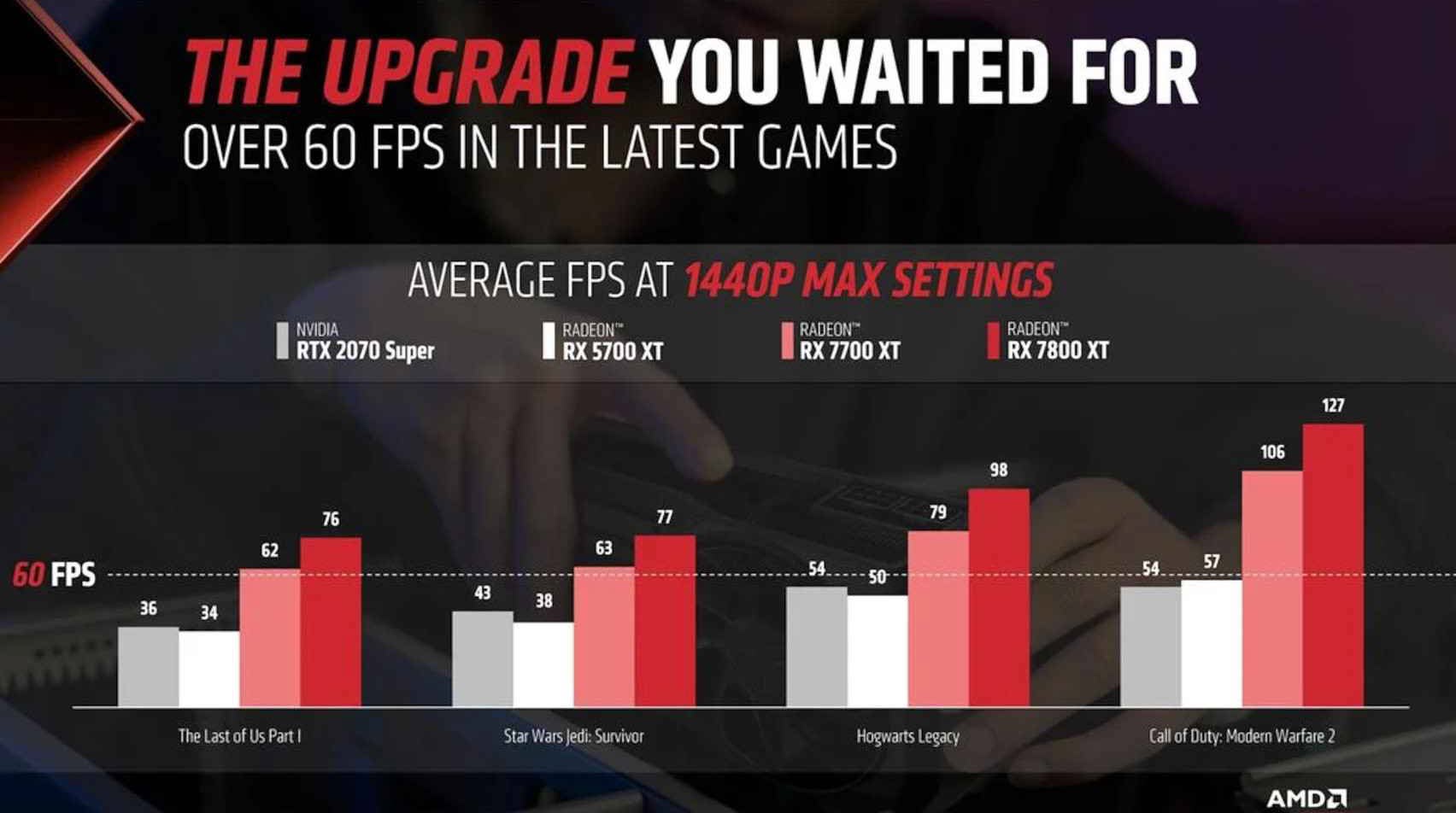Computers & Laptops | September 4, 2023

2023 has been particularly good for gamers. In addition to the plethora of new portable consoles released, there’s a significant development in the form of decreased graphics card prices. After years of exorbitant prices driven by cryptocurrency demand, the market has finally calmed down. While we don’t know if graphics card prices will rise again, for now, AMD has finally launched the models that many gamers have been waiting for: the Radeon RX 7800 XT and the Radeon RX 7700 XT.
These two mid-range models aim to strike a balance between power and price, making them superior to the Radeon RX 7600 introduced this summer, which targeted 1080p gaming. In contrast, these two models are aimed at the 1440p resolution, which is often considered the perfect middle ground for gamers.
Therefore, 4K resolution is not the priority, although achieving it shouldn’t be difficult for some titles, as we’ll see later on. With these releases and the latest driver updates from AMD, the company aims to offer solutions that allow playing the latest games at good quality.
This new generation of AMD graphics cards represents a significant leap from its predecessors. AMD boasts that both the RX 7700 XT and the RX 7800 XT can exceed 60 frames per second at 1440p resolution in demanding games like The Last of Us, Star Wars Jedi: Survivor, and Hogwarts Legacy. In some cases, they even approach and surpass 100 fps. Consequently, they offer a substantial difference if you previously had a mid-range graphics card like the AMD RX 5700 XT or Nvidia’s RTX 2070 Super, which are no longer capable of exceeding 60 fps in these games without graphical compromises. Both models are based on the 5nm RDNA 3 architecture with 6nm memory chiplets, as well as the new generation Infinity Cache that connects both components with high transfer rates. Moreover, both support new technologies like DisplayPort 2.1 connections for new monitors, as well as video encoding using the more efficient AV1 codec.
The difference between the two models boils down to the chip’s power and the number of active units. The more powerful model is the RX 7800 XT, with 60 compute units at a frequency of 2124 MHz and 16 GB of GDDR6 memory. It has a TDP of 263 watts, and the recommended price is $499, although the final price will depend on the brand and any modifications it receives. AMD claims that this model can outperform Nvidia’s RTX 4070, which is $100 more expensive, in many games, even reaching 23% faster performance in Cyberpunk 2077, potentially putting Nvidia in a difficult spot.

On the other hand, the RX 7700 XT is the “trimmed” model, retaining most features but with fewer compute units (54), although the frequency is slightly higher (2171 MHz). The main technical difference lies in the memory bus; while the RX 7800 XT has a 256-bit bus, this model has a 192-bit bus. Despite that, it’s significantly superior to the RTX 4060 Ti, its competition in most games according to AMD’s data. This is due to Nvidia’s decision to compromise on the quantity and memory bus. In this case, the choice seems clear, although as always, it will be interesting to see Nvidia’s response, whether through price reductions or a new model.
AMD has also taken the opportunity to introduce two technologies that aim to counter Nvidia’s trump card: software. It’s no secret that DLSS is a significant reason to buy an Nvidia RTX graphics card; it’s a technology capable of magically boosting frames per second. AMD’s counterpart is called FSR, which has now reached its third version.
The concept is the same: instead of rendering each frame one by one, interpolation can be used to “create” new intermediate frames that aren’t actually rendered by the graphics card. This translates into increased performance. AMD calls this “Fluid Motion Frames.” AMD’s demonstration is impressive: Forspoken at native 4K resolution was running at 36 fps in a demanding scene, which jumped to 122 fps with FSR 3 enabled. Radeon Anti-Lag+ is also activated to eliminate the latency between the frames rendered by the card and the interpolated frames, in addition to native anti-aliasing to improve image quality.

AMD’s version doesn’t use machine learning, so it doesn’t require dedicated hardware like Nvidia’s version. This means that FSR 3 can work on all current cards starting from the RX 5000 series, although AMD claims that results are better on newer models. It also works on gaming consoles that use AMD chips, like the Xbox Series X and PlayStation 5.
Finally, AMD has confirmed the launch of Hypr-RX, a new feature for Radeon cards that essentially combines several existing technologies into a “magic button” that automatically improves performance and image quality. Among these technologies are Radeon Super Resolution (which upscales the image to the monitor’s native resolution), Radeon Boost (which dynamically lowers resolution when detecting fast movement), and the aforementioned Radeon Anti-Lag.
AMD claims that enabling Hypr-RX can yield up to an additional 60 frames per second in games like Apex Legends, although the effect seems to depend on the game. Hyper-RX will be available in AMD’s drivers to be released in September.